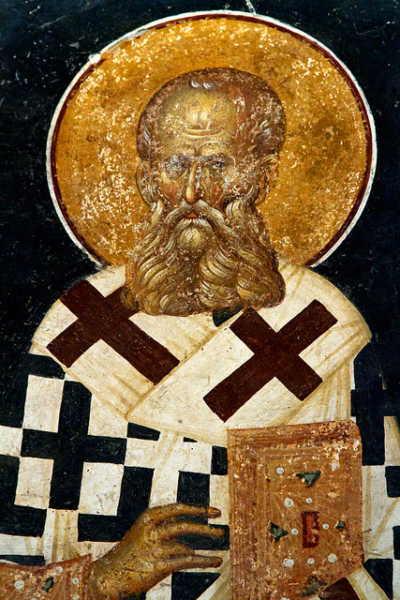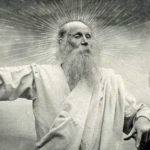We run our website the way we wished the whole internet worked: we provide high quality original content with no ads. We are funded solely by your direct support. Please consider supporting this project.

How the Church Fathers Read the OT
After the completion of the New Testament, the church fathers developed theology in their increasingly Gentile post-apostolic church in such a way that many of the distinctively Jewish features of the NT’s use of the OT diminished. However, this was not the case with regard to the Christocentric interpretation of the OT that was so central to how the NT writers interpreted the OT. As noted historian, Robert Wilken, has noted, the early church fathers didn’t consider the original meaning of OT passages to be altogether irrelevant, but they did consider it merely “preparatory” for the fuller meaning of passages that was unlocked when they were read in the light of Christ. The distinctly “Christian understanding” of Scripture was for them “oriented toward the living Christ revealed through the words of the Bible…”[1]
For these believers, writes Denis Farkasfalvy, “Jewish holy books function and are interpreted as documents of a Christ-centered salvation history with its full and true meaning apparent only in the light of the Church’s faith in Christ.”[2] Indeed, according to Claire McGinnis, “[n]ot only did the NT serve as the key to understanding the Old” for these fathers, but the uniform assumption of interpreters during this period was that “the books of the Old were about Christ.”[3] Following the precedent of the NT, these fathers understood Christ to be the fulfillment of fundamental OT motifs as well as of specific OT prophecies.
Following this precedent, these fathers relied on typological as well as allegorical interpretive strategies to discern Christ in the OT. It was by this means that Origen, Gregory of Nyssa, John Cassian and others were able to discern how violent portraits of God in the OT bore witness to Christ, as argued in The Crucifixion of the Warrior God.
By means of creative Christocentric interpretive strategies such as these, the Bible became for these interpreters “a vast field of interrelated words, all speaking about the same reality, the one God revealed in Christ,” as Wilken notes. The central goal of early Christian interpreters, he continues, was “to find Christ in surprising and unexpected places.” [4] And it was primarily by this means that the early Church was able to continue to embrace the OT as its own.
[1] R. L. Wilken, “Interpreting the Old Testament,” Isaiah: Interpreted by Early Christian and Medieval Commentators, trans. and ed. R. L. Wilken, A, R. Christman, and J. Hollerich; The Church’s Bible, xvii.
[2] Denis Farkasfalvy, Inspiration and Interpretation, 23.
[3] Claire McGinnis. “Stumbling over the Testaments: On Reading Patristic Exegesis and the Old Testament in Light of the New,” Journal of Theological Interpretation (April, 2010), 15-31.
[4] Wilken, “Interpreting the Old Testament,” xviii.
Photo credit: Nick in exsilio via Visual Hunt / CC BY-NC-SA
Category: General
Tags: Bible Interpretation, Church Fathers, Cruciform Theology
Related Reading

The Phinehas vs. Jesus Conundrum
I’ll be frank. This is not a blog that will be easy for some people to read. But it’s a blog I believe every follower of Jesus should read – even if you have to force yourself to press on. It’s about something we all wish was not true. It’s about the way the Bible…

Reflections on the Supremacy of Christ (Part 1)
In my previous post I argued that the Bible tells a story in which the culminating event – the coming of Christ – reframes everything that preceded it. Though it is all inspired, not everything in it should carry equal weight for us. Rather, everything leading up to Christ, including the portraits of God, must…

When the Law Demanded the Death Penalty
The Sinai covenant is significantly structured around violence. It motivates behavioral conformity by promising rewards and threatening violence. Without the threat of violence, the law looses its “teeth.” If the law is an acquiescence to sin, then the divinely sanctioned violence that is associated with it must also be considered an acquiescence to sin. The…

Podcast: Can the God of Cruciform Theology Be Considered Ethical?
Divine duplicity? Or Holy Handiwork? Greg considers the imperfections of the Old Testament and considers God’s role therein. http://traffic.libsyn.com/askgregboyd/Episode_0287.mp3

Crucifying Transcendence
The classical view of God’s transcendence in theology is in large borrowed from a major strand within Hellenistic philosophy. In sharp contrast to ancient Israelites, whose conception of God was entirely based on their experience of God acting dynamically and in self-revelatory ways in history, the concept of God at work in ancient Greek philosophy…

Sermons: The Church – Week Five
In week five of this sermon series, Greg Boyd discusses what the church should look like in the lens of the cross. A universal Church was born out of the ministry of Jesus, and this Church is empowered to look like the Cross. In this sermon, Greg shows us why it’s so important, as the…
